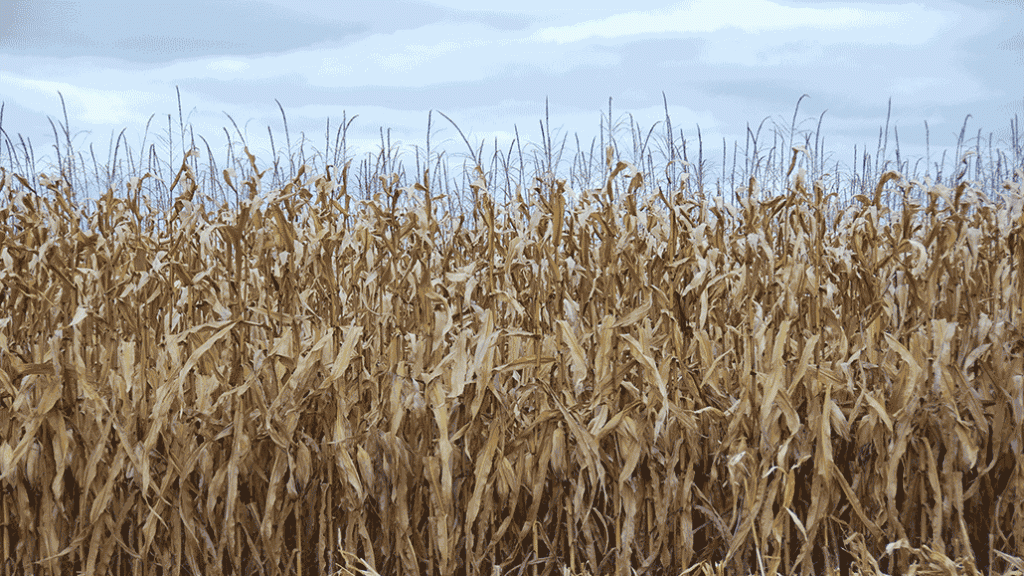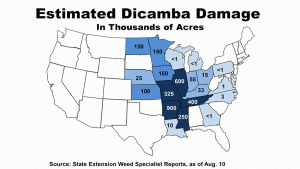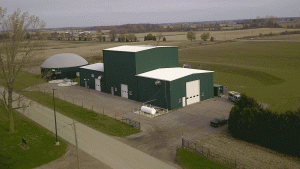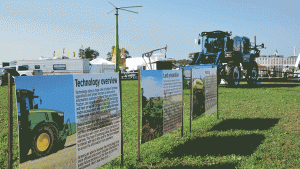The path to better crop protection
FROM IDEA TO MARKET

WAYNE BARTON’S METHOD for developing agricultural crop protection products is to stay one or two steps ahead of Mother Nature.
Barton, BASF’s manager of research and commercial development for Canada, may have a formula that sounds simple; however, its execution is anything but.
“We will screen 100,000 compounds before we find one that will get to market,” he says. “We try to anticipate crop needs that are 10 years down the road, and we recognize that the investment for one new active ingredient is about $250 million, so we really can’t afford to get it wrong.”
Despite the steep costs, BASF is committed to innovation. Its vitality index — which measures new product revenues as a percentage of overall revenues — shows that 72 per cent of its total sales between 2012 and 2016 were of products that were less than five years old.
Barton says that his company’s goal in Canada is to find solutions to Canadian problems — especially in spring canola, spring wheat, peas, and lentils — crops that are grown more here than in any other country.
STAGES OF DEVELOPMENT
BASF has a long history of finding new compounds to combat all manner of pests. It gets ideas for new products from sales people who are in touch with farmers every day, as well as marketing and technical teams in Canada and around the world. Barton says that the company also regularly pulls together panels of six to 30 growers to determine what challenges they’re facing — weeds, insects, and diseases — and how they might be addressed.
The first stage in the development is at the company’s screening facilities where new solutions are tested in confined conditions to avoid adverse reactions in the natural environment. Once they’ve passed that hurdle, they’re examined in research plots in real field conditions. Finally, there are grower trials in which willing customers will use a portion of their land to try out new pesticides.
“The technology drive is huge in Canada — growers are extremely curious and always ready to co-operate and collaborate by hosting trials,” says BASF marketing manager Julia Harnal.
There are checks and balances at each stage along the way regarding the potential product’s technical traits, marketability, sustainability, efficacy, and whether it would meet regulatory standards.
Then, the ‘winning’ product goes into the registration process at the Pest Management Regulatory Agency, an arm of Health Canada that’s mandated to ensure pesticides won’t harm human or environment health and are effective at what they claim to do.
REGULATORY RIGOUR
Jason Flint, the agency’s director general of policy, communications and regulatory affairs, says PMRA receives between 10,000 and 30,000 pages of documentation for some applications.
“Our job as a regulator is to put controls around the chemical so it’s controlling just the pest it’s meant to, in the place that it’s supposed to, and not harming people or the environment,” he says.
Both the results of tests for the active ingredient and the formulations of products that will be used have to be checked.
“We receive between 2,500 and 3,000 applications a year — both for new active ingredients and new or amended product approvals,” he says. “Some new active ingredients will have two or three products associated with them, and others can have as many as 10.”
All the tests that manufacturers have to do adhere to standards set by the Organization for Economic Co-operation and Development (OECD) — so the package that goes to the PMRA could also go to the U.S., Australia, France, and Denmark, for example. Consistency across countries also means that larger applications can be split up among OECD members and the results of the reviews used in mulitiple countries.
Brand new products coming on the market are fewer and further between these days. Barton says there are a number of reasons, but mostly it’s about the enormous investment in terms of time — each product takes about 10 years to develop — and money.
Among the considerations that factor into reviews are the chemical make-up of the product, including its toxicity, the way it’s manufactured, and whether it’s being used as a foliar or seed treatment.
CAREFUL PROCESS
The PMRA checks first for the potential human effects of the product — for those handling it, such as farmers, those who will ingest the food that it’s used on, and by-standers who are in the vicinity when the chemical is being applied.
An environmental assessment looks at the effects on water, soil, fish, birds, animals, beneficial insects, and habitat. Recently, pollinator assessments have been added.
“We review how long it takes to break down, if it will run into streams, how long it stays in the soil,” Flint says.
Advances have been made to make the process more efficient. Under the North American Free Trade Agreement (NAFTA), ‘eco-zone’ maps were developed showing areas with similar geography, topography, weather, and pest pressures so that manufacturers can test products in one location for use in larger areas.
There’s also a value assessment in which the company has to demonstrate that the product does what it is supposed to do. Flint says that these assessments are more flexible than they were in the past, and rely primarily on the extensive testing that manufacturers require to assure themselves their products will work.
“They also have to show that the product is needed to control a pest problem,” Flint says.
A LONG JOURNEY
Finally, there’s a 45-day public consultation period for products containing new active ingredients and a 90-day period for re-evaluations. All told, complex reviews can take two years, although simpler reviews, such as expanding the use of an approved product are shorter – as is done under the Minor Use Pesticide Program (MUPP). In this program, Agriculture and Agri-food Canada (AAFC) conducts trials and drafts submissions for new crop protection methods to the PMRA for registration. Once a year, farmers, PMRA, and AAFC meet to decide which solutions will be tested.
In Ontario, these products also need to be included in a classification system that regulates the sale, use, transportation, storage, and disposal of pesticides.
For BASF’s Barton, climate change could be the largest factor in the future of pest control.
“More than ever, we are looking for ways to help crops tolerate stress — heat tolerance, drought tolerance, and the ability to deal with flooding,” he says. “Evolution is constant — our ability to deliver new technologies is more and more difficult and expensive and it’s tougher to stay ahead now than it was 40 years ago,” he adds.
So the battle goes on, with manufacturers and regulators working to stay ‘one step ahead’ to make and review products that better protect crops, people, and the environment. •


























